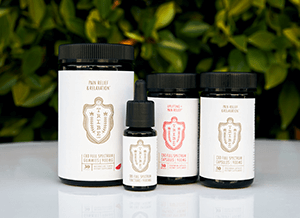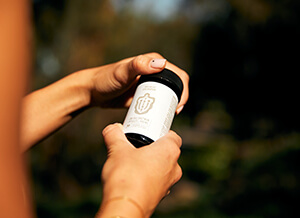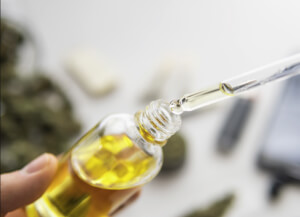If you feel like CBD is just about everywhere you look these days, you are not alone. Whether it’s a health foods store, online retailer or even a gas station, CBD has made it to the shelf. Like many Americans, you may not have heard about CBD five years ago. But today, in 2021, there is a buzz surrounding this natural compound that has taken it as far as entering the realm of sports. For many athletes, professional and amateur alike, a natural alternative to enhance their practice is desirable. So it sounds like CBD and sports are match made to last.
With decades of cannabis prohibition in our past, some are lead to assume the potentially therapeutic benefits of CBD are a modern discovery, but that’s far from the case. Let’s take a look at the history of CBD and cannabis through the ages and how we ended up with a booming CBD market that has entered the world of sports.
Early Cannabinoid Discovery
Though hemp was a crop common to American colonies and crucial to many economies in early states, after the turn of the 20th century, cannabis plants bred for high THC content began to draw controversy. The entire hemp growing industry (often cultivated for fiber) was targeted based on prohibition propaganda like the scandalous ‘Reefer Madness’ film and the notion hemp and marijuana were the same plant.
The presence of the first individual compound within the cannabis plant was discovered in 1940 by a British chemist named Robert S. Cahn [1]. Just two years later, American chemist Roger Adams pioneered isolating the first cannabinoid ever, cannabidiol or CBD [2]. A few more years down the road, in 1963 the stereochemistry of CBD was discovered by Dr. Raphael Mechoulam and shortly after the stereochemistry of THC. These breakthrough findings began to unveil the direct relationship to the “high” associated with THC and distanced CBD as a similarly mind-altering compound [3].
Research continued to advance and New Mexico’s landmark passage of the 1978 Controlled Substances Therapeutic Research Act legalized the research of cannabis for medicinal purposes [4]. Throughout the 80s Dr. Mechoulam and his team embarked on studies of CBD treatment for epilepsy. Four months into the study and 50% of the participants had stopped having seizures [5].
Fast forward as decade, the ECS was discovered in 1988 by American scientists Allyn Howlett and William Devane [6]. This realization that the human body has receptors for cannabinoids must mean the body naturally produces them, eventually dubbed “endocannabinoids.” More research lead to an increased understanding of these receptors and the discovery of the specific receptors CB1 and CB2 confirmed that our bodies do respond to cannabinoids like CBD and THC [7]. As research and animal studies continued to progress, the interest in CBD grew across the US and the legality began to change.
CBD’s History in Sports
The World Anti-Doping Agency (WADA) was founded in 1999 to promote and coordinate in the fight against doping in sports. Similarly the World Anti-Doping Code was created in 2004. Before that prohibition within sports was left up to the governing international sports federations to ban or not to ban certain substances from their sports. Cannabis has always been the most controversial substance of topic, and until fairly recently this included CBD in the mix.
In 2017 the WADA removed CBD from its list of banned substances, while THC, the most commonly associated compound with marijuana remained on the list [8]. The discovery of the ECS and its interaction with cannabinoids finally opened the door for athletes to reap the potentially therapeutic benefits of CBD with less worry.
Though there are limited studies available surrounding CBD and sports, there is promise in the direction of a positive correlation. There have also been more and more athletes vouching for CBD as a vital aspect of their recovery and training routine. CBD is thought to have strong anti-inflammatory properties and vital antioxidants that can be beneficial for pain management, stress relief and sleep, all based on its interaction with the ECS [9].
There are still sports leagues that have regulations in place when it comes to CBD, but more and more of them are starting to reconsider. Because the popularity of CBD and sports continues to rise, there are also more and more options for athletes to turn to when it comes to an effective high-quality product.
How To Utilize CBD in Sports
When it comes to CBD use for athletes, there can be a variety of methods of consumption or application. Oils and tinctures are the most ideal form of sublingual consumption, entering the bloodstream immediately and producing effects quickly. Oils and tinctures are ideal for pain relief as well as mental health, stress reduction, sleep, etc. CBD topicals are a great choice for effective pain relief, applied directly to an affected area. CBD recovery rubs or cold therapy creams, such as Tribe CBD’s Broad Spectrum Cold Therapy Hemp CBD Cream, are perfect for targeted application and absorb through the skin rapidly.
CBD is a great alternative for athletes and active people when it comes to pain relief, inflammation, and mental health. Because the compound is naturally derived it can serve as an ideal replacement for traditional medications but should be still be treated as potentially appearing on a drug test. Although CBD and THC are different and with varying effects, there is an association of one to the other, especially in the world of sports. When turning to CBD as an athlete, be sure to always turn to reliable products and companies with accurate label claims and third-party lab test results.
To learn more about Tribe CBD and what products are best for athletes, click here.
Sources
- https://www.ncbi.nlm.nih.gov/pmc/articles/PMC1760722/
- http://www.freedomleaf.com/roger-adams-cbd/
- https://www.ncbi.nlm.nih.gov/pmc/articles/PMC1760722/
- https://www.nmlegis.gov/sessions/11%20regular/memorials/house/HM053.html
- https://pubmed.ncbi.nlm.nih.gov/351429/
- https://www.labroots.com/trending/cannabis-sciences/8456/endocannabinoid-system-discovered
- https://weedmaps.com/news/2019/05/cbd-and-your-endocannabinoid-system-explained/
- https://www.wada-ama.org/en/questions-answers/cannabinoid
- https://www.ncbi.nlm.nih.gov/pmc/articles/PMC7338332/




